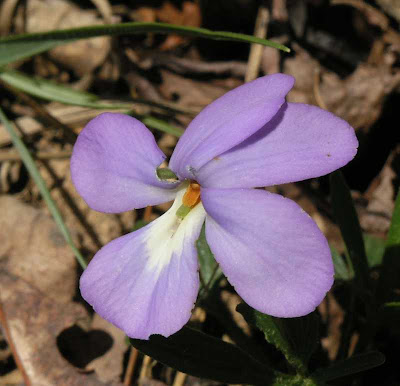Common Blue Violet
(probably Viola papilionacea)
(probably Viola papilionacea)
This particular Common Blue Violet (Viola papilionacea or Viola sororia) is ALWAYS our first spring wildflower. It grows in a microclimate, a crack in a large, south-facing rock. In the winter, leafless trees allow much sunshine to warm the rock, but it's shaded in the summer so the violet doesn't get too dry and die. I first found this little violet about ten years ago. It's bloomed every year since, though our unusually mild winter this year means it's blooming a lot earlier.
Viola papilionacea is a native perennial that grows throughout most of eastern and central North America. Both flowers and leaves are highly variable. Flowers can range from white, to blue, to deep purple. They can also be variegated. The taxonomy of the plant is also questionable and some authors place the plant as a variety of V. sororia. V. pranticola is another synonym. Finally, the Common Blue Violet can hybridize with at least four other species of Viola.
Bees and other insects do sometimes visit and pollinate violets, but they have no reliable pollinators. Hence, violets also produce cleistogamous flowers, flowers that never open and are automatically self-pollinating.
.










